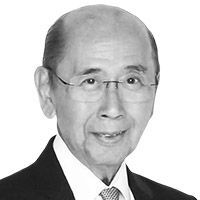The Presidents Club

I have just read the book “The Presidents Club†authored by Nancy Gibbs and Michael Duffy which recounts how former American presidents related to each other and the incumbent in the Oval Office. The Presidents Club was established at the Eisenhower inauguration by former Presidents Herbert Hoover and Harry Truman. It is a fascinating story of political and personal rivalry which inevitably yielded in the interest of the nation and the protection of the integrity of the “Office of the President†regardless of who was the incumbent.
Harry Truman and Herbert Hoover were the most unlikely to work together. They were political enemies and temperamental opposites. Herbert Hoover left office, a despised man and his motorcade was pelted with rotten fruit. Yet upon assumption of office after the death of President Franklin Roosevelt, Harry Truman realized that he needed the skills of Hoover to assist in developing plans to address the plight of a war ravaged Europe with one hundred million at risk of starving. He succeeded so well that Truman asked his advice in the reorganization of the presidency itself. Years later, the Secretary of Defense Robert McNamara stated that the Pentagon was able to save billions because of Hoover’s efforts. Later Hoover wrote Truman: “Yours has been a friendship which has reached deeper into my life than you know.†In 1962, Truman said: “I feel that I am one of his closest friendsâ€.
Another narrative referred to Richard Nixon’s loss to John F. Kennedy. There had been allegations of electoral fraud. He was persuaded by the former president not to contest the elections. At the instigation of Herbert Hoover seconded by then President Dwight Eisenhower, it was suggested that Nixon should meet President-elect Kennedy. When Kennedy called and said “I would like to fly down from Palm Beach to have a chat with youâ€â€¦.“Nixon agreed and even offered to make the trip himself and added, what were, for Kennedy the magic words: “After all, that’s the proper thing to do in view of last Tuesday’s resultsâ€.
Kennedy and his predecessor, Dwight Eisenhower, never saw eye to eye. Kennedy disliked Eisenhower (among his staff he referred to him as that “assholeâ€) even as he avoided publicly rebuking an iconic figure highly revered by the American people. Eisenhower never cared much for Kennedy’s style and derided his “dreary foreign record†in the two years since the latter succeeded him in office which included the failed Bay of Pigs invasion. Yet when called upon, Eisenhower publicly backed Kennedy’s actions in Cuba. During the 1962 Cuban missile crisis, before Kennedy announced to the world that he would impose a naval quarantine, he sought the support of his presidential predecessors, namely, Hoover, Truman and Eisenhower. They all agreed. Eisenhower went on TV which received a New York Times headline: “Eisenhower Bars Any Crisis Abroad as an Election Issueâ€. He called “current foreign policy as an improper topic for partisan attack.†The Presidents Club proved once again its effectiveness, influence and commitment to the interests of the nation despite partisan differences.
At the very beginning of the Clinton presidency, he realized the need to secure the advice of his predecessors. The disgraced but pardoned Richard Nixon was initially ignored but eventually considered a “helpful advisor†by Clinton. Prior to Nixon’s death, he wrote a letter regarding Russia which Clinton considered the most lucid paper written on the subject.
The book covers the US presidency until the beginning of the Obama administration. At Obama’s suggestion, George W. Bush hosted a White House luncheon for the “Club†in January 2009; the guests included five living presidents. Over sandwiches, the “Club†“was trying to educate President-elect Obama in a nice way without preaching to him, by letting him hear them exchange ideas back and forth, about what experiences they had. Congress and foreign policy was discussed as well as living accommodations and the challenge of children growing up in the rarefied atmosphere of the White House. The host, George W. Bush said: “We want you to succeed….whether we’re Democrat or Republican, we all care deeply about this country…all of us who have served in this office understand that the office transcends the individual.â€
The authors Duffy and Gibbs commented: “If the Presidents Club had a seal, around the ring would be three words – cooperation, competition and consolationâ€. It is impossible for me to cover the entire 523 pages and comply with the editorial guideline of being short and crisp. Today, my main focus was on the cooperative efforts of the former presidents as members of a very exclusive club driven by the national interest and respect for the Office of the President. In my humble opinion, there are lessons here in this area that would be meaningful for us Filipinos, particularly where partisanship is transcended by the national interest.
Reminiscence: The Ramos presidency
On March 18, former President Fidel V. Ramos, FVR to many, will celebrate his birthday. At 85, FVR still cuts the familiar figure of a cigar-chomping golf enthusiast with a foreign travel agenda that would tax even those half his age. In his travels, he remains an enthusiastic promoter of the Philippines and the “can do†mindset. It was my privilege and honor to have been his Secretary of Foreign Affairs during the period (1992-1995) when building upon President Cory Aquino’s valiant effort that brought the country back to its democratic roots. FVR presided over unprecedented nation building characterized by high economic growth, rapid adaptation of new technologies and political stability.
No doubt many will be reminiscing about FVR achievements next week. As foreign secretary, I was witness in particular to his political acumen and pragmatic approach to foreign relations. The current imbroglio in Sabah – albeit under entirely different circumstances - reminds me of the time when our relations with Malaysia were at an all time-low. As the neophyte foreign secretary, tradition required that I visit my counterparts in ASEAN. The first visit was Malaysia where I met Abdullah Badawi, my counterpart. Aside from the perfunctory hospitality accorded a new foreign minister, I also made a formal call on then Prime Minister Mahathir. I painfully remember sitting across the Prime Minister seated at a distance of some 15 feet away with the glare of the bright sun in my eyes. Our conversation was stilted and his responses were monosyllabic inviting no further elaboration. One could conclude that it was a manifestation of a frosty relationship not only directed towards me but to my country.
Much to my surprise, I was later informed that President Ramos was being invited to make a state visit to Malaysia. Clearly, that was not prompted by my less than sterling performance in Kuala Lumpur. President Ramos accepted and I was included in the presidential party as well other cabinet officials, among them Roy Navarro of Trade and Industry, Rene de Villa of Defense and Raffy Alunan of DILG. My predecessor, Raul Manglapus also accompanied us.
Immediately after arrival at the state guest house, we were invited to join the President for a strategy session on the Sabah issue. The meeting ended way past midnight. The next morning, we were to meet with the Prime Minister and his Cabinet. That morning the President instructed me to arrange a “four eyes†meeting with the Prime Minister. I explained that was not the way meetings were held. There must at least be note-takers. He ignored my statement and just told me to do it. In the motorcade to the PM’s office, I was accompanied by the Malaysian ambassador in an assigned car. I informed the ambassador of the President’s desire. Predictably, he objected stating that was not the protocol. I reiterated my President’s instructions. As we reached the government house, he jumped out of the car and ran up the stairs leading to the PM’s office.
The President was escorted to the PM’s office while the rest of the Filipino party was directed to a meeting room where we met the members of the Malaysian cabinet. We waited for what seemed like an eternity for the two to emerge - unsure of the outcome. An hour later, the President and Prime Minister joined, both smiling. The bilateral meeting proceeded in an atmosphere of surprising amity. It was then that we learned of the agreement to move forward on the Ramos initiative of the BIMP-EAGA (Brunei Indonesia Malaysia Philippines-East Asia Growth Area). Yes, the Sabah claim was placed in the back burner but I hasten to add never dropped. BIMP-EAGA was to provide economic prosperity for the area. In a reciprocal state visit of Mahathir later, he aptly described the initiative as “Prosper thy Neighborâ€.
- Latest
- Trending




























